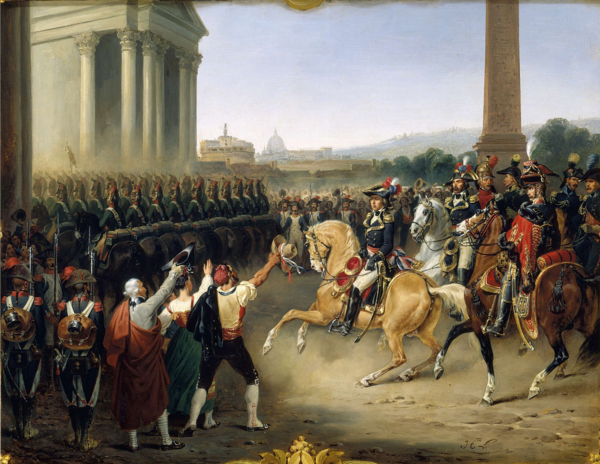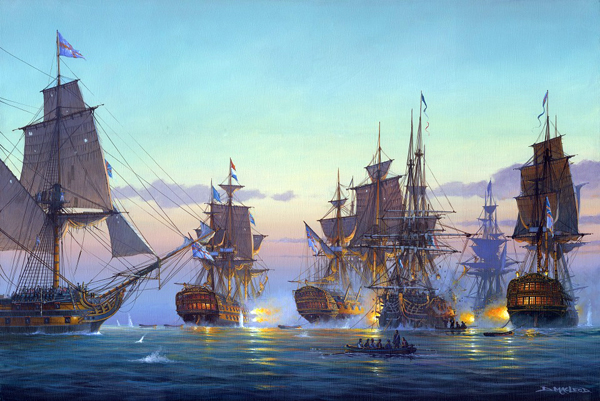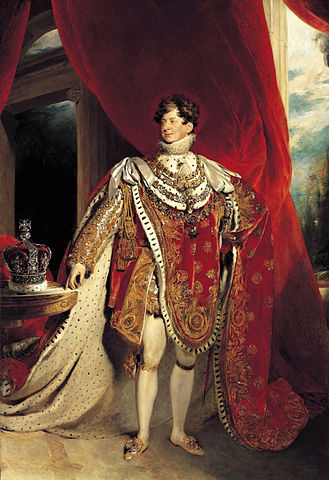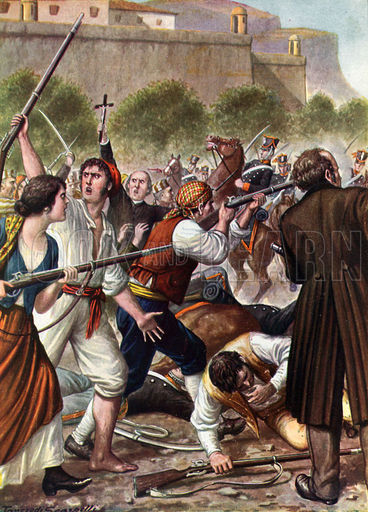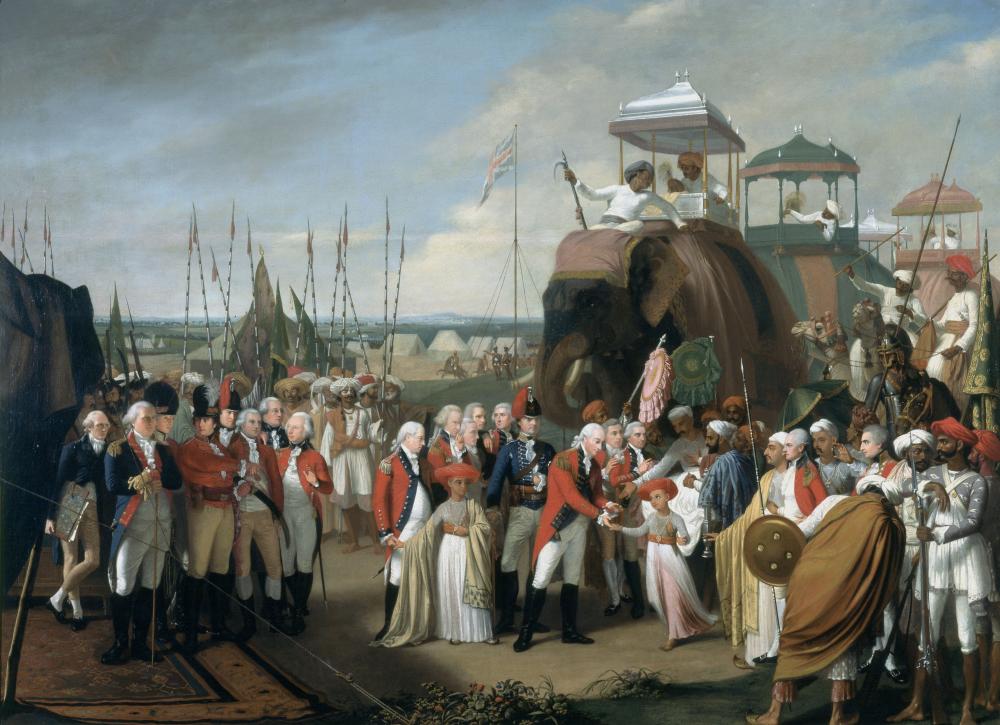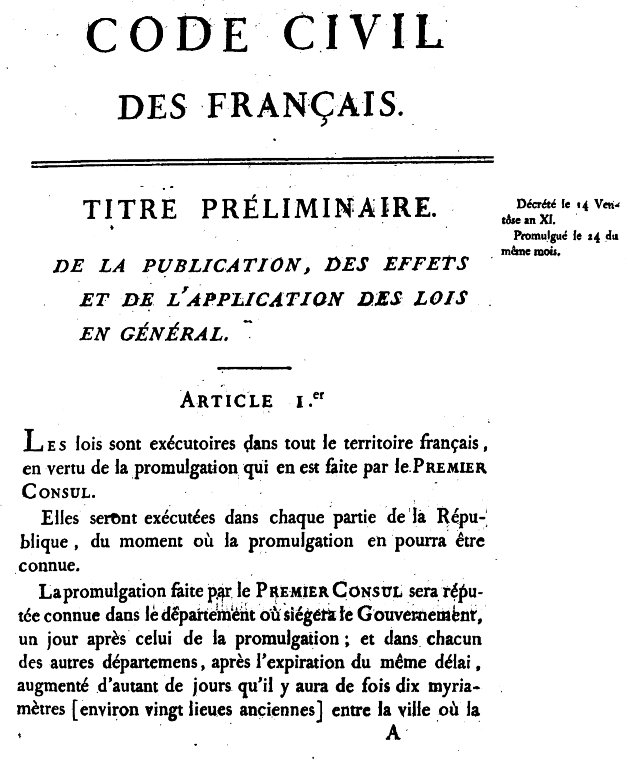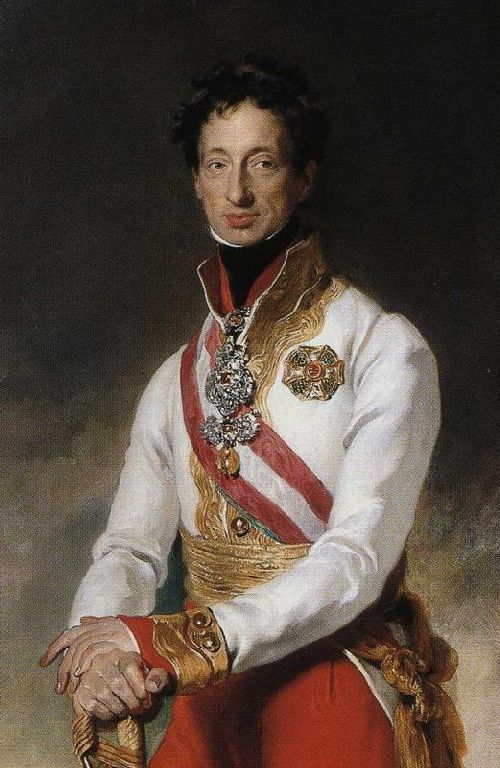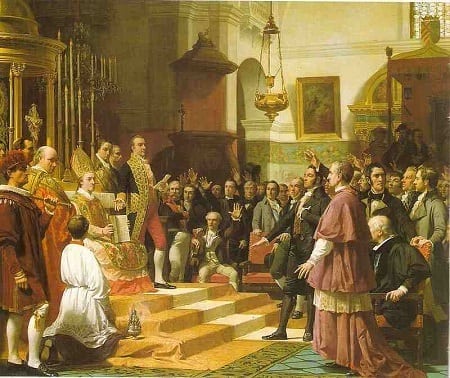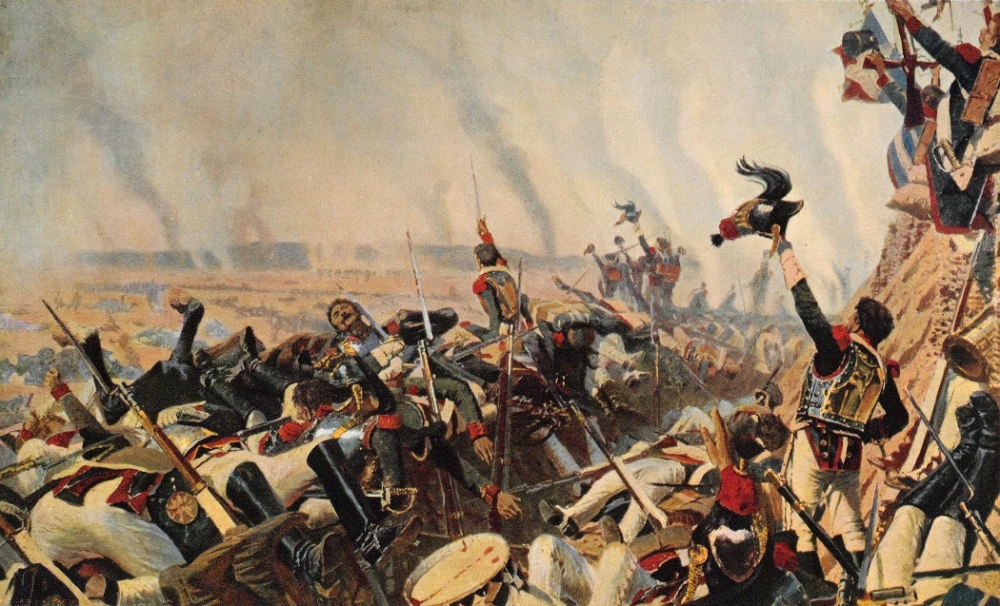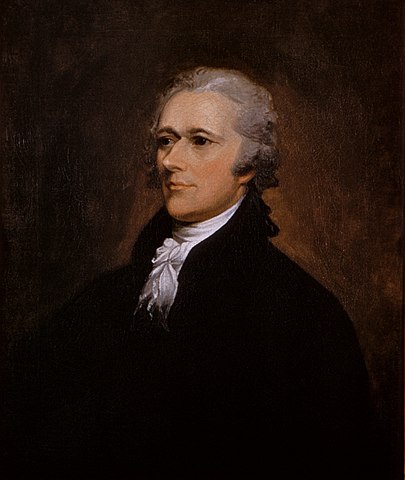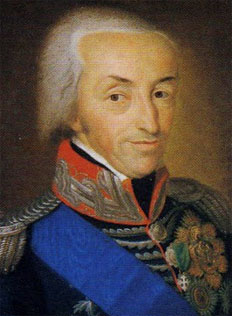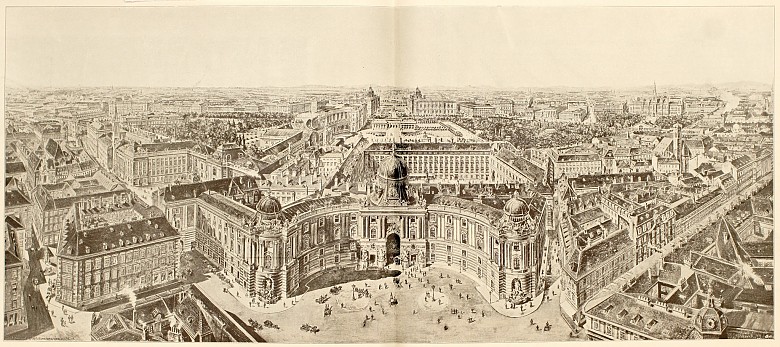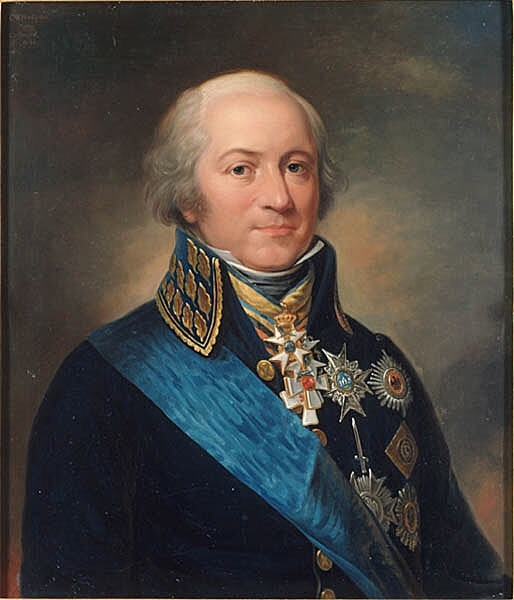World News
Posted: 02:44:13 Sunday, 07 May, 2017
Q4 1799


World Crises
Show
War of the Second Coalition
Quasi-War
Anglo-Baltic Tensions
War of Knives
Lotus Rebellion
Quasi-War
Anglo-Baltic Tensions
War of Knives
Lotus Rebellion
World News
Show
Europe
*A failed attempt to seize Batavian Holland takes place, as a joint Anglo-Russian expedition is defeated at land by the Dutch and French forces.
*Following the failed invasion of the Batavian Republic, and outraged by British naval activities in the Baltics, Russia leaves the Second Coalition and joins the league of armed neutrality, ceasing military operations against France.
*The Austrian army continues its advances in Northern italy, occupying Milan and forcing the Cisalpine government into retreat southwards towards Modena.
*Napoleon Bonaparte leaves Egypt and returns to France unannounced, where he is greeted as a hero by all frenchmen. Shortly thereafter, Bonaparte stages a coup that successfully brings down the French Directoy.
*A remnant of the Council of Ancients abolishes the old constitution and puts forth a new one, establishing a new government in France and entrusting Bonaparte with the rank of 'First Consul', effectively making him Dictator of the French Republic.
Africa
*In Egypt, a sizeable Ottoman Army is defeated at Aboukir by the French forces under Napoleon. The French suffer meagre casualties, while thousands of Ottomans are killed in the clash.
Americas
*The Quasi-War continues to rage between the French and American navies, as both nations continue to seize eachother's commercial shipping in the Atlantic and Carribean seas.
*The Civil war in Haiti continues, as the locals supporting Rigaud and the ones supporting Toussaint clash in violent encounters all over the territory.
Asia
*The Sikh armies, led by the Maharaja, take over Lahore, greatly expanding their territories.
*A failed attempt to seize Batavian Holland takes place, as a joint Anglo-Russian expedition is defeated at land by the Dutch and French forces.
*Following the failed invasion of the Batavian Republic, and outraged by British naval activities in the Baltics, Russia leaves the Second Coalition and joins the league of armed neutrality, ceasing military operations against France.
*The Austrian army continues its advances in Northern italy, occupying Milan and forcing the Cisalpine government into retreat southwards towards Modena.
*Napoleon Bonaparte leaves Egypt and returns to France unannounced, where he is greeted as a hero by all frenchmen. Shortly thereafter, Bonaparte stages a coup that successfully brings down the French Directoy.
*A remnant of the Council of Ancients abolishes the old constitution and puts forth a new one, establishing a new government in France and entrusting Bonaparte with the rank of 'First Consul', effectively making him Dictator of the French Republic.
Africa
*In Egypt, a sizeable Ottoman Army is defeated at Aboukir by the French forces under Napoleon. The French suffer meagre casualties, while thousands of Ottomans are killed in the clash.
Americas
*The Quasi-War continues to rage between the French and American navies, as both nations continue to seize eachother's commercial shipping in the Atlantic and Carribean seas.
*The Civil war in Haiti continues, as the locals supporting Rigaud and the ones supporting Toussaint clash in violent encounters all over the territory.
Asia
*The Sikh armies, led by the Maharaja, take over Lahore, greatly expanding their territories.
Player Stats
Show
French Republic
First Consul: Napoleon Bonaparte (Huojin)
Popularity: High
Units: 14/25 [-55, 2 in Genoa, 7 on the Rhine, 1 in Egypt, 1 in Malta, -125 maintenance]
Fleets: 4/10 [-30, 3 in the Caribbean, 3 in the North Atlantic -50 maintenance]
Economy: +350
Debt: 1400
Income: +130 [+50 French Agriculture, +15 Caribbean Income, +15 Trade, +15 Ligurian Tribute, +5 Cisalpine Tribute, +15 Batavian Tribute, +5 Swiss Tribute, -70 Debt Interest]
Conflicts: War of the Second Coalition, Quasi-War, War of Knives
=
Pro-Toussaint Forces
Units: 4
=
Pro-Rigaud Forces
Units: 2
Kingdom of Great Britain
King: George III (Serenissima)
Prime Minister: William Pitt ‘The Younger’
Popularity: Moderate
Units: 3/9 [-30, 2 in Ireland, 1 in the Cape Colony, 1 in Jamaica, 1 in Gibraltar, 1 in Canada, -45 maintenance]
Fleets: 7/25 [-90, 3 in the Baltic Sea, 2 in the Caribbean, 4 in the Bay of Biscay, 2 in the Indian Ocean, 4 in the North Atlantic, 3 in the Mediterranean -125 maintenance]
Economy: +365
Debt: 800
Income: +195 [+15 Kingdom of Ireland, +20 Electorate of Hannover, +25 North American Income, +45 Caribbean Income, +50 Indian Income, +10 Malayan Trade, +60 Trade, -40 Debt Interest]
Conflicts: War of the Second Coalition, Baltic Tensions, Native American Unrest, Marathan Tensions
=
North American Natives
Units: 2
===
Kingdom of Ireland (Personal Union)
Stability: 2
Conflicts: Catholic Unrest
===
Electorate of Hannover (Personal Union)
Units: 2/3 [-10, 2 in Hannover, -15 maintenance]
Stability: 2
Conflicts: War of the Second Coalition
==
Canadian Militias
Units: 2
Kingdom of Prussia
King: Frederick William III (Doctor of Oblivion)
Popularity: Low
Units: 11/11 [-55 maintenance]
Fleets: 1/1 [-5 maintenance]
Economy: +210
Debt: 1600
Income: +100 [+30 Trade, -80 Debt Interest]
Conflicts: Baltic Tensions
Habsburg Monarchy
Emperor: Francis II (Flamelord)
Popularity: Moderate
Units: 11/22 [-55, 6 in Black Forest, 5 in Northern Italy, -110 maintenance]
Fleets: 1/1 [-5 maintenance]
Economy: +265
Debt: 900
Income: +195 [+15 Adriatic Trade, +15 Venetian Income, +20 Bohemian Mining, +20 Hungarian Agriculture, +10 Danube Tariffs, +40 Trade, +25 HRE Taxation, -45 Debt Interest]
Conflicts: War of the Second Coalition
Empire of Russia
Tsar: Paul I (Scorpion)
Popularity: Somewhat Low
Units: 14/14 [-70 maintenance]
Fleets: 5/5 [-25 maintenance]
Economy: +160
Debt: 200
Income: +140 [+20 Russian Furs, +30 Ukrainian Agriculture, +10 Alaskan Income, +25 Trade, -10 Debt Interest]
Conflicts: Baltic Tensions, Circassian Unrest, Iranian Tensions
Kingdom of Spain
King: Charles IV (DutchGuy)
Popularity: Moderate
Units: 2/6 [-20, 4 in the Pyrenees, -30 maintenance]
Fleets: 7/7 [-35 maintenance]
Economy: +210
Debt: 2000
Income: +140 [+15 New Spain Mining, +15 New Grenada Mining, +30 Peruvian Mining, +10 Philippine Trade, +25 Caribbean Income +20 Trade, -100 Debt Interest]
Conflicts: War of the Second Coalition, Indigenous American Unrest
=
Colonial Militias
Units: 6 [1 in New Spain, 1 in Cuba, 1 in New Granada, 1 in Peru, 1 in Rio de la Plata, 1 in Louisiana]
Sublime Ottoman State
Sultan: Selim III (Aesculus)
Popularity: Somewhat Low
Units: 7/10 [-15, 3 in the Sinai, -50 maintenance]
Fleets: 6/6 [-30 maintenance]
Economy: +155
Debt: 800
Income: +175 [+15 Black Sea Trade, +15 Turkish Straits Control, +15 Minority Taxation, +20 Barbary Tribute, +30 Vassal Tribute, +60 Trade, -40 Debt Interest]
Conflicts: War of the Second Coalition, Janissary Unrest
Batavian Republic
President: Augustijn Gerhard Besier (Acheron)
Popularity: Moderate
Units: 1/3 [-10, 2 in Holland, -15 maintenance]
Fleets: 7/7 [-35 maintenance]
Economy: +170
Debt: 2000
Income: +155 [+20 Amsterdam Stock Market, +15 Indian Trade, +5 Gold Coast Income, +25 East Indian Income, +30 Caribbean Income, +50 Trade, -100 Debt Interest]
Conflicts: War of the Second Coalition
Electorate of Bavaria
Elector: Maximilian I Joseph (Hussam_B)
Popularity: Moderate
Units: 0/3 [-15, 4 in Bavaria, -15 maintenance]
Economy: +90
Debt: 150
Income: +80 [+30 Trade, -10 Debt Interest]
Conflicts: War of the Second Coalition
Kingdom of Denmark
King: Christian VII
Popularity: Low
Units: 4/4 [-20 maintenance
Fleets: 8/8 [-40 maintenance]
Economy: +140
Debt: 700
Income: +120 [+30 Kingdom of Norway, +25 Sound Dues, +10 Caribbean Income, +5 Gold Coast Income, +35 Trade, -35 Debt Interest]
Conflicts: Baltic Tensions
===
Kingdom of Norway (Personal Union)
Stability: 5
Units: 2/2 [-10 maintenance]
Fleets: 4/4 [-20 maintenance]
Conflicts: Baltic Tensions
Cisalpine Republic
First Director: Francesco Melzi d’Eril (Sonny)
Popularity: Somewhat High
Units: 0/2 [-10, 2 in Modena, -10 maintenance]
Economy: +70
Debt: 100
Income: +60 [+15 Trade, -5 Debt Interest]
Conflicts: War of the Second Coalition
The Papal States
Pope: No pope, Papal Conclave in charge, Exiled in Venice (Smyg)
Popularity: Somewhat Low
Economy: +15
Debt: 250
Income: +25 [+20 Papal Tributes, -10 Debt Interest]
Conflicts: War of the Second Coalition, Neapolitan occupation of Rome
Maratha Empire
Chatrapati: Shahu II (Murtox)
Popularity: Moderate
Units: 10/10 [-50 maintenance]
Fleets: 1/1 [-5 maintenance]
Economy: +120
Debt: 1000
Income: +80 [+10 Cotton Trade, +15 Spice Trade, +40 Trade, -50 Debt Interest]
Conflicts: British Tensions
Sikh Empire
Maharaja: Ranjit Singh (Red John)
Popularity: Very High
Units: 8/8 [-40 maintenance]
Economy: +80
Debt: 200
Income: +55 [+25 Trade, -10 Debt Interest]
Conflicts: Afghan Tensions
United States of America
President: John Adams (Snacks)
Popularity: Low
Units: 2/2 [-10 maintenance]
Fleets: 0/3 [-15, 1 in the Caribbean, 2 in the North Atlantic, -15 maintenance]
Economy: +120
Debt: 400
Income: +95 [+30 Trade, +20 Southern Agriculture, -15 Barbary Tribute, -20 Debt Interest]
Conflicts: Quasi-War, Native American Unrest
==
Native Americans
Units: 4
===
US State Militias
Units: 10
Sublime State of Iran
Shah: Fath-Ali Shah (Coin)
Popularity: Somewhat High
Units: 7/7 [-35 maintenance]
Fleets: 1/1 [-5 maintenance]
Economy: +100
Debt: 300
Income: +100 [+35 Trade, +20 Vassal Tributes, -15 Debt Interest]
Conflicts: Russian Tensions
Kingdom of Morocco
Sultan: Mulay Sulemain (Shebedaone)
Popularity: High
Units: 7/7 [-35 maintenance]
Fleets: 2/2 [-10 maintenance]
Economy: +80
Debt: 300
Income: +50 [+30 Trade, -15 Debt Interest]
Conflicts: None
Kingdom of Portugal
Queen: Mary I (LordMoose)
Popularity: Low
Units: 6/6 [-30 maintenance]
Fleets: 5/5 [-25 maintenance]
Economy: +120
Debt: 200
Income: +145 [+10 Brazilian Mining, +10 Brazilian Sugar, +20 African Income, +15 Indian Trade Posts, +35 Trade, -10 Debt Interest]
Conflicts: War of the Second Coalition
Kingdom of Naples
King: Ferdinand IV (The_Hawkish_Pacifist)
Popularity: Somewhat High
Units: 2/5 [-15, 3 in Rome, -25 maintenance]
Fleets: 2/2 [-10 maintenance]
Economy: +100
Debt: 150
Income: +80 [+40 Trade, -10 Debt Interest]
Conflicts: War of the Second Coalition
Electorate of Saxony
Elector: Frederick Augustus I (Niel)
Popularity: Low
Units: 3/3 [-15 maintenance]
Economy: +80
Debt: 200
Income: +75 [+20 Trade, -10 Debt Interest]
Conflicts: None
Kingdom of Sweden
King: Gustav IV Adolf (lbj181)
Popularity: Somewhat High
Units: 7/7 [-35 maintenance]
Fleets: 6/6 [-30 maintenance]
Economy: +110
Debt: 200
Income: +105 [+20 Swedish Furs, +15 Baltic Trade, +35 Trade, -10 Debt Interest]
Conflicts: Baltic Tensions, Tensions with Tripoli
Qing Empire
Emperor: Aisin Gioro Yongyan (Gesar)
Popularity: High
Units: 10/10 [-50 maintenance]
Fleets: 2/2 [-10 maintenance]
Economy: +140
Debt: 400
Income: +100 [+40 Trade, -20 Debt Interest]
Conflicts: White Lotus Rebellion
==
White Lotus Rebels:
Units: 1
First Consul: Napoleon Bonaparte (Huojin)
Popularity: High
Units: 14/25 [-55, 2 in Genoa, 7 on the Rhine, 1 in Egypt, 1 in Malta, -125 maintenance]
Fleets: 4/10 [-30, 3 in the Caribbean, 3 in the North Atlantic -50 maintenance]
Economy: +350
Debt: 1400
Income: +130 [+50 French Agriculture, +15 Caribbean Income, +15 Trade, +15 Ligurian Tribute, +5 Cisalpine Tribute, +15 Batavian Tribute, +5 Swiss Tribute, -70 Debt Interest]
Conflicts: War of the Second Coalition, Quasi-War, War of Knives
=
Pro-Toussaint Forces
Units: 4
=
Pro-Rigaud Forces
Units: 2
Kingdom of Great Britain
King: George III (Serenissima)
Prime Minister: William Pitt ‘The Younger’
Popularity: Moderate
Units: 3/9 [-30, 2 in Ireland, 1 in the Cape Colony, 1 in Jamaica, 1 in Gibraltar, 1 in Canada, -45 maintenance]
Fleets: 7/25 [-90, 3 in the Baltic Sea, 2 in the Caribbean, 4 in the Bay of Biscay, 2 in the Indian Ocean, 4 in the North Atlantic, 3 in the Mediterranean -125 maintenance]
Economy: +365
Debt: 800
Income: +195 [+15 Kingdom of Ireland, +20 Electorate of Hannover, +25 North American Income, +45 Caribbean Income, +50 Indian Income, +10 Malayan Trade, +60 Trade, -40 Debt Interest]
Conflicts: War of the Second Coalition, Baltic Tensions, Native American Unrest, Marathan Tensions
=
North American Natives
Units: 2
===
Kingdom of Ireland (Personal Union)
Stability: 2
Conflicts: Catholic Unrest
===
Electorate of Hannover (Personal Union)
Units: 2/3 [-10, 2 in Hannover, -15 maintenance]
Stability: 2
Conflicts: War of the Second Coalition
==
Canadian Militias
Units: 2
Kingdom of Prussia
King: Frederick William III (Doctor of Oblivion)
Popularity: Low
Units: 11/11 [-55 maintenance]
Fleets: 1/1 [-5 maintenance]
Economy: +210
Debt: 1600
Income: +100 [+30 Trade, -80 Debt Interest]
Conflicts: Baltic Tensions
Habsburg Monarchy
Emperor: Francis II (Flamelord)
Popularity: Moderate
Units: 11/22 [-55, 6 in Black Forest, 5 in Northern Italy, -110 maintenance]
Fleets: 1/1 [-5 maintenance]
Economy: +265
Debt: 900
Income: +195 [+15 Adriatic Trade, +15 Venetian Income, +20 Bohemian Mining, +20 Hungarian Agriculture, +10 Danube Tariffs, +40 Trade, +25 HRE Taxation, -45 Debt Interest]
Conflicts: War of the Second Coalition
Empire of Russia
Tsar: Paul I (Scorpion)
Popularity: Somewhat Low
Units: 14/14 [-70 maintenance]
Fleets: 5/5 [-25 maintenance]
Economy: +160
Debt: 200
Income: +140 [+20 Russian Furs, +30 Ukrainian Agriculture, +10 Alaskan Income, +25 Trade, -10 Debt Interest]
Conflicts: Baltic Tensions, Circassian Unrest, Iranian Tensions
Kingdom of Spain
King: Charles IV (DutchGuy)
Popularity: Moderate
Units: 2/6 [-20, 4 in the Pyrenees, -30 maintenance]
Fleets: 7/7 [-35 maintenance]
Economy: +210
Debt: 2000
Income: +140 [+15 New Spain Mining, +15 New Grenada Mining, +30 Peruvian Mining, +10 Philippine Trade, +25 Caribbean Income +20 Trade, -100 Debt Interest]
Conflicts: War of the Second Coalition, Indigenous American Unrest
=
Colonial Militias
Units: 6 [1 in New Spain, 1 in Cuba, 1 in New Granada, 1 in Peru, 1 in Rio de la Plata, 1 in Louisiana]
Sublime Ottoman State
Sultan: Selim III (Aesculus)
Popularity: Somewhat Low
Units: 7/10 [-15, 3 in the Sinai, -50 maintenance]
Fleets: 6/6 [-30 maintenance]
Economy: +155
Debt: 800
Income: +175 [+15 Black Sea Trade, +15 Turkish Straits Control, +15 Minority Taxation, +20 Barbary Tribute, +30 Vassal Tribute, +60 Trade, -40 Debt Interest]
Conflicts: War of the Second Coalition, Janissary Unrest
Batavian Republic
President: Augustijn Gerhard Besier (Acheron)
Popularity: Moderate
Units: 1/3 [-10, 2 in Holland, -15 maintenance]
Fleets: 7/7 [-35 maintenance]
Economy: +170
Debt: 2000
Income: +155 [+20 Amsterdam Stock Market, +15 Indian Trade, +5 Gold Coast Income, +25 East Indian Income, +30 Caribbean Income, +50 Trade, -100 Debt Interest]
Conflicts: War of the Second Coalition
Electorate of Bavaria
Elector: Maximilian I Joseph (Hussam_B)
Popularity: Moderate
Units: 0/3 [-15, 4 in Bavaria, -15 maintenance]
Economy: +90
Debt: 150
Income: +80 [+30 Trade, -10 Debt Interest]
Conflicts: War of the Second Coalition
Kingdom of Denmark
King: Christian VII
Popularity: Low
Units: 4/4 [-20 maintenance
Fleets: 8/8 [-40 maintenance]
Economy: +140
Debt: 700
Income: +120 [+30 Kingdom of Norway, +25 Sound Dues, +10 Caribbean Income, +5 Gold Coast Income, +35 Trade, -35 Debt Interest]
Conflicts: Baltic Tensions
===
Kingdom of Norway (Personal Union)
Stability: 5
Units: 2/2 [-10 maintenance]
Fleets: 4/4 [-20 maintenance]
Conflicts: Baltic Tensions
Cisalpine Republic
First Director: Francesco Melzi d’Eril (Sonny)
Popularity: Somewhat High
Units: 0/2 [-10, 2 in Modena, -10 maintenance]
Economy: +70
Debt: 100
Income: +60 [+15 Trade, -5 Debt Interest]
Conflicts: War of the Second Coalition
The Papal States
Pope: No pope, Papal Conclave in charge, Exiled in Venice (Smyg)
Popularity: Somewhat Low
Economy: +15
Debt: 250
Income: +25 [+20 Papal Tributes, -10 Debt Interest]
Conflicts: War of the Second Coalition, Neapolitan occupation of Rome
Maratha Empire
Chatrapati: Shahu II (Murtox)
Popularity: Moderate
Units: 10/10 [-50 maintenance]
Fleets: 1/1 [-5 maintenance]
Economy: +120
Debt: 1000
Income: +80 [+10 Cotton Trade, +15 Spice Trade, +40 Trade, -50 Debt Interest]
Conflicts: British Tensions
Sikh Empire
Maharaja: Ranjit Singh (Red John)
Popularity: Very High
Units: 8/8 [-40 maintenance]
Economy: +80
Debt: 200
Income: +55 [+25 Trade, -10 Debt Interest]
Conflicts: Afghan Tensions
United States of America
President: John Adams (Snacks)
Popularity: Low
Units: 2/2 [-10 maintenance]
Fleets: 0/3 [-15, 1 in the Caribbean, 2 in the North Atlantic, -15 maintenance]
Economy: +120
Debt: 400
Income: +95 [+30 Trade, +20 Southern Agriculture, -15 Barbary Tribute, -20 Debt Interest]
Conflicts: Quasi-War, Native American Unrest
==
Native Americans
Units: 4
===
US State Militias
Units: 10
Sublime State of Iran
Shah: Fath-Ali Shah (Coin)
Popularity: Somewhat High
Units: 7/7 [-35 maintenance]
Fleets: 1/1 [-5 maintenance]
Economy: +100
Debt: 300
Income: +100 [+35 Trade, +20 Vassal Tributes, -15 Debt Interest]
Conflicts: Russian Tensions
Kingdom of Morocco
Sultan: Mulay Sulemain (Shebedaone)
Popularity: High
Units: 7/7 [-35 maintenance]
Fleets: 2/2 [-10 maintenance]
Economy: +80
Debt: 300
Income: +50 [+30 Trade, -15 Debt Interest]
Conflicts: None
Kingdom of Portugal
Queen: Mary I (LordMoose)
Popularity: Low
Units: 6/6 [-30 maintenance]
Fleets: 5/5 [-25 maintenance]
Economy: +120
Debt: 200
Income: +145 [+10 Brazilian Mining, +10 Brazilian Sugar, +20 African Income, +15 Indian Trade Posts, +35 Trade, -10 Debt Interest]
Conflicts: War of the Second Coalition
Kingdom of Naples
King: Ferdinand IV (The_Hawkish_Pacifist)
Popularity: Somewhat High
Units: 2/5 [-15, 3 in Rome, -25 maintenance]
Fleets: 2/2 [-10 maintenance]
Economy: +100
Debt: 150
Income: +80 [+40 Trade, -10 Debt Interest]
Conflicts: War of the Second Coalition
Electorate of Saxony
Elector: Frederick Augustus I (Niel)
Popularity: Low
Units: 3/3 [-15 maintenance]
Economy: +80
Debt: 200
Income: +75 [+20 Trade, -10 Debt Interest]
Conflicts: None
Kingdom of Sweden
King: Gustav IV Adolf (lbj181)
Popularity: Somewhat High
Units: 7/7 [-35 maintenance]
Fleets: 6/6 [-30 maintenance]
Economy: +110
Debt: 200
Income: +105 [+20 Swedish Furs, +15 Baltic Trade, +35 Trade, -10 Debt Interest]
Conflicts: Baltic Tensions, Tensions with Tripoli
Qing Empire
Emperor: Aisin Gioro Yongyan (Gesar)
Popularity: High
Units: 10/10 [-50 maintenance]
Fleets: 2/2 [-10 maintenance]
Economy: +140
Debt: 400
Income: +100 [+40 Trade, -20 Debt Interest]
Conflicts: White Lotus Rebellion
==
White Lotus Rebels:
Units: 1
Europe
Show
Grand Duchy of Tuscany
Stability: 5
Units: 6
Fleets: 1
Conflicts: None
Most Serene Republic of Lucca
Stability: 5
Units: 1
Fleets: 1
Conflicts: None
Duchy of Parma
Stability: 3
Units: 2
Fleets: 0
Conflicts: None
Principality of Wallachia (Tributary of the Ottomans)
Stability: 3
Units: 3
Fleets: 0
Conflicts: None
Principality of Moldavia (Tributary of the Ottomans)
Stability: 3
Units: 3
Fleets: 0
Conflicts: None
Duchy of Wurttemberg
Stability: 5
Units: 3
Fleets: 0
Conflicts: None
Duchy of Hesse
Stability: 5
Units: 5
Fleets: 0
Conflicts: None
Duchy of Wurzburg
Stability: 5
Units: 4
Fleets: 0
Conflicts: None
Duchy of Brunswick
Stability: 5
Units: 3
Fleets: 0
Conflicts: None
Helvetic Republic
Stability: 3
Units: 4
Fleets: 0
Conflicts: War of the Second Coalition
Ligurian Republic
Stability: 3
Units: 3
Fleets: 3
Conflicts: War of the Second Coalition
Kingdom of Sardinia
Stability: 4
Units: 4
Fleets: 3
Conflicts: None
Kingdom of Georgia (Vassal of Russia)
Stability: 3
Units: 2
Fleets: 0
Conflicts: None
Kingdom of Imereti
Stability: 4
Units: 3
Fleets: 0
Conflicts: None
Chiefdom of Circassia
Stability: 4
Units: 4
Fleets: 0
Conflicts: Russian Tensions
Stability: 5
Units: 6
Fleets: 1
Conflicts: None
Most Serene Republic of Lucca
Stability: 5
Units: 1
Fleets: 1
Conflicts: None
Duchy of Parma
Stability: 3
Units: 2
Fleets: 0
Conflicts: None
Principality of Wallachia (Tributary of the Ottomans)
Stability: 3
Units: 3
Fleets: 0
Conflicts: None
Principality of Moldavia (Tributary of the Ottomans)
Stability: 3
Units: 3
Fleets: 0
Conflicts: None
Duchy of Wurttemberg
Stability: 5
Units: 3
Fleets: 0
Conflicts: None
Duchy of Hesse
Stability: 5
Units: 5
Fleets: 0
Conflicts: None
Duchy of Wurzburg
Stability: 5
Units: 4
Fleets: 0
Conflicts: None
Duchy of Brunswick
Stability: 5
Units: 3
Fleets: 0
Conflicts: None
Helvetic Republic
Stability: 3
Units: 4
Fleets: 0
Conflicts: War of the Second Coalition
Ligurian Republic
Stability: 3
Units: 3
Fleets: 3
Conflicts: War of the Second Coalition
Kingdom of Sardinia
Stability: 4
Units: 4
Fleets: 3
Conflicts: None
Kingdom of Georgia (Vassal of Russia)
Stability: 3
Units: 2
Fleets: 0
Conflicts: None
Kingdom of Imereti
Stability: 4
Units: 3
Fleets: 0
Conflicts: None
Chiefdom of Circassia
Stability: 4
Units: 4
Fleets: 0
Conflicts: Russian Tensions
Asia
Show
Company Rule in India (British Controlled)
Stability: 4
Units: 9 (4 in bengal, 3 in Madras, 2 in Bombay)
Fleets: 3 (2 in bengal, 1 in Bombay)
Conflicts: War of the Second Coalition, Marathan Tensions
Maratha Empire
Stability: 4
Units: 10
Fleets: 1
Conflicts: None
Mughal Empire
Stability: 2
Units: 1
Fleets: 0
Conflicts: None
Sikh Empire
Stability: 4
Units: 7
Fleets: 0
Conflicts: None
Kingdom of Afghanistan
Stability: 3
Units: 6
Fleets: 0
Conflicts: None
Tokugawa Shogunate
Stability: 5
Units: 14
Fleets: 2
Conflicts: Sakoku
Great Joseon State
Stability: 4
Units: 3
Fleets: 1
Conflicts: None
Ryukyu Kingdom
Stability: 4
Units: 2
Fleets: 0
Conflicts: Japan-China Dual Tributary Relations
Dai Viet
Stability: 2
Units: 8
Fleets: 1
Conflicts: Internal Divisions
Kingdom of Champasak
Stability: 3
Units: 2
Fleets: 0
Conflicts: None
Kingdom of Vientiane
Stability: 3
Units: 2
Fleets: 0
Conflicts: None
Kingdom of Luang Phrabang
Stability: 3
Units: 2
Fleets: 0
Conflicts: None
Khmer Kingdom
Stability: 2
Units: 3
Fleets: 0
Conflicts: None
Ayutthaya Kingdom
Stability: 4
Units: 7
Fleets: 2
Conflicts: None
Toungoo Dynasty (Burma)
Stability: 3
Units: 10
Fleets: 1
Conflicts: None
Bruneian Empire
Stability: 3
Units: 5
Fleets: 1
Conflicts: None
Sultanate of Maguindanao
Stability: 4
Units: 3
Fleets: 1
Conflicts: Tensions with Spanish Philippines
Sultanate of Oman
Stability: 4
Units: 5
Fleets: 3
Conflicts: Arab Tensions
Stability: 4
Units: 9 (4 in bengal, 3 in Madras, 2 in Bombay)
Fleets: 3 (2 in bengal, 1 in Bombay)
Conflicts: War of the Second Coalition, Marathan Tensions
Maratha Empire
Stability: 4
Units: 10
Fleets: 1
Conflicts: None
Mughal Empire
Stability: 2
Units: 1
Fleets: 0
Conflicts: None
Sikh Empire
Stability: 4
Units: 7
Fleets: 0
Conflicts: None
Kingdom of Afghanistan
Stability: 3
Units: 6
Fleets: 0
Conflicts: None
Tokugawa Shogunate
Stability: 5
Units: 14
Fleets: 2
Conflicts: Sakoku
Great Joseon State
Stability: 4
Units: 3
Fleets: 1
Conflicts: None
Ryukyu Kingdom
Stability: 4
Units: 2
Fleets: 0
Conflicts: Japan-China Dual Tributary Relations
Dai Viet
Stability: 2
Units: 8
Fleets: 1
Conflicts: Internal Divisions
Kingdom of Champasak
Stability: 3
Units: 2
Fleets: 0
Conflicts: None
Kingdom of Vientiane
Stability: 3
Units: 2
Fleets: 0
Conflicts: None
Kingdom of Luang Phrabang
Stability: 3
Units: 2
Fleets: 0
Conflicts: None
Khmer Kingdom
Stability: 2
Units: 3
Fleets: 0
Conflicts: None
Ayutthaya Kingdom
Stability: 4
Units: 7
Fleets: 2
Conflicts: None
Toungoo Dynasty (Burma)
Stability: 3
Units: 10
Fleets: 1
Conflicts: None
Bruneian Empire
Stability: 3
Units: 5
Fleets: 1
Conflicts: None
Sultanate of Maguindanao
Stability: 4
Units: 3
Fleets: 1
Conflicts: Tensions with Spanish Philippines
Sultanate of Oman
Stability: 4
Units: 5
Fleets: 3
Conflicts: Arab Tensions
Africa
Show
Kingdom of Kongo
Stability: 3
Units: 6
Fleets: 0
Conflicts: None
Kingdom of Ethiopia
Stability: 5
Units: 8
Fleets: 0
Conflicts: None
Stability: 3
Units: 6
Fleets: 0
Conflicts: None
Kingdom of Ethiopia
Stability: 5
Units: 8
Fleets: 0
Conflicts: None





